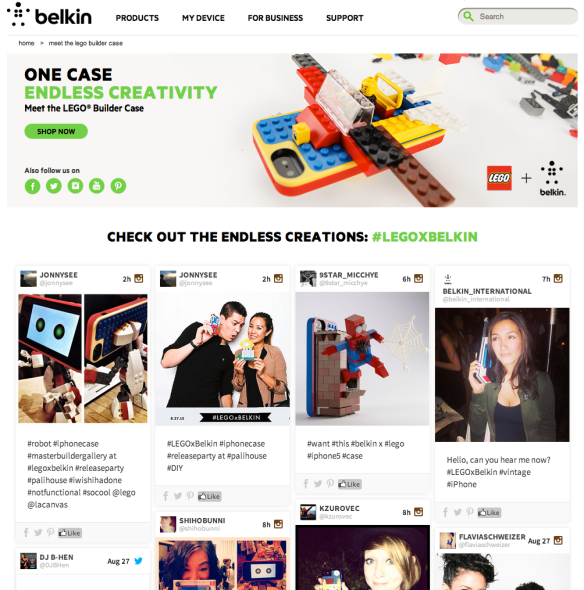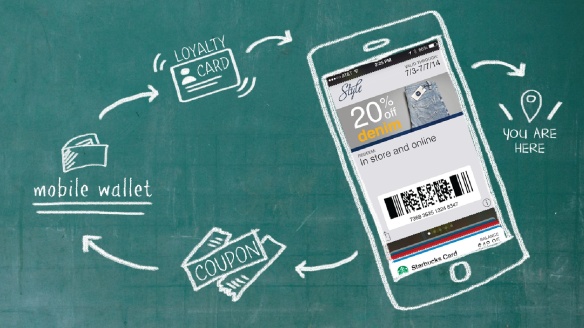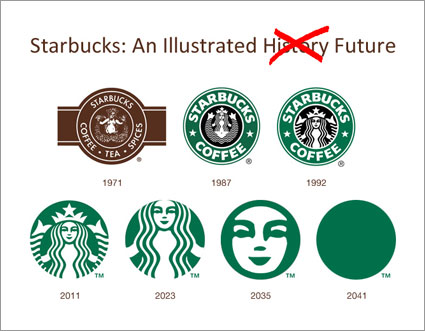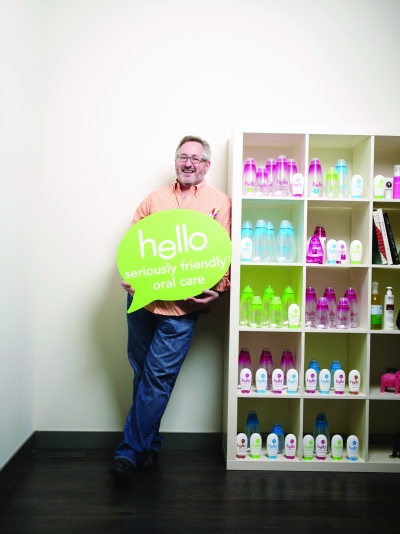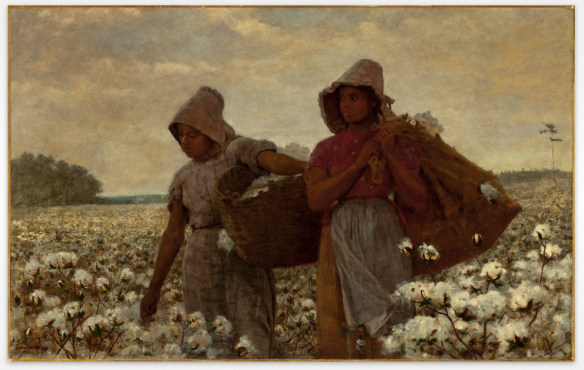It’s just so simple, amazing and pure. That’s what poetry should be like. A simple conversational rhythm of ideas. This has the power and the simplicity to create a space, that you can enter and share with the poet.
Two Calls For Submissions
The likable brand
The likable brand
– by Samir Kumar
(Creative Strategist, Brand Harvest)
A case for ‘Authenticity’
Posted, liked, followed and likeable: between numbers and quality of brand interaction
There’s an obsessive, compulsive race to get massive social media followings for brands. Posts, posts and more posts – quizzes, contests, pictures, quotes, animations, videos, banners, offers, content – there’s a mad frenzy to get the content up and running. Buy likes if you have to, push your content, rehash existing content from five different sources – post, push, repeat. In creating this loud din, what brands are in the fear of losing is their authentic voice. The ability of a brand to be liked is in its authenticity and not in adding to the noise and clutter.
To build likability, every brand must focus on authenticity
Authenticity for a brand comes directly from within its fundamental aspects. The whole purpose, positioning, shared experiences and culture of a brand constitutes its authenticity. It is the position of strength of the brand. While communicating, interacting, or creating experiences, a brand must stand true to its core. It’s not just about what the brand says, but also about how it does it. To be consistently authentic, is most critical in the meta-transparent world of social media.
Take, for example, #LEGOxBelkin. The reason for its success is its authenticity, emerging from the core brand attributes. At its very core, the brand Belkin stands for innovations that are inspired by people. And their potential. It’s reflective in their entire range of product innovations. Consider the Belki identity. Mr. PIP is warm and human; it’s embracing you with outstretched hands. The overall strategy of the organisation is to deliver most people focused technology experience. Now, consider #LEGOxBelkin UGC campaign. Belkin created the coolest, most customizable iphone case in partnership with Lego. The case had Lego studs at the back of the cover. Belkin asked their customers to show off their creativity and how each one personalized their case by tagging their Instagram photos with. It not only allowed current users to share their cool stuff, it also signaled potential buyers about how cool the case could be in a very authentic and organic manner. The campaign line: ‘Endless Creativity’ not only communicates the essence of the campaign, it also is intrinsically connected to the core of the brand.
Content marketing has evolved as the cornerstone of most strategies seeking social followings. But it’s a massive challenge to control the tone and the manner in which the content is presented. First of all, it should not be disguised advertising. Most content creators today find it easier to create brand messages through content. It shouldn’t be so. In-fact, it dilutes the authenticity of the brand. Your purpose as a brand should reflect in the way you make meaningful contributions and it’s beyond a sales pitch. We must learn to have a sophisticated understanding of our brand’s purpose and be able to practice a disciplined application of that understanding. The critical thing here is – ‘sophisticated’. It’s not a straight, mundane, linear understanding of what the brand stands for and what it means to the customer. A sophisticated understanding helps create authenticity without trying to be a hard sell the brand. Authenticity in content marketing is achieved through this. Anthroplogie’s content marketing strategy is a case in point.
Anthropologie connects with its customers by understanding that fashion and apparel is not the only space to connect. It could also be DIY cocktail recipes. They frequently features DIY cocktail recipes on their blog. These drink recipes are seasonal and timely (delivering a tangible value – for example, summer refreshers) but at the same time, the recipes also feature unique ingredients and flavors, mimicking the original style of Anthropologie’s fashions. Anthropologie’s DIY cocktail recipe is not a direct play at sales (they don’t sell syrups!), it’s actually a smart positioning: a trendy, friend who knows a thing or two about drinks—as well as clothes. That’s what authenticity is about: if a brand is a trendy and a cool friend, it can talk to you about drinks as much as fashion. And notice how connected they are with the category code as well as their target audience.
This ‘sophisticated’ understanding holds true for every form of interaction. It is critical to ensure that the impulse to sell or a creative idea/trend does not take over the authenticity. It is important, in this light, that filters of brand’s fundamentals are applied for every content that goes out in the social space.
Authenticity cannot be made up. It’s discovered and built upon.
Because authenticity emerges from the core of the brand, it would be foolhardy to assume that you can simply create one and graft it into your expressions and interactions. Very often, a select set of adjectives, tonality and a set of images, etc is created as a bank and used to benchmark authenticity in every piece of communication. Nothing is further from the truth. Authenticity emerges only and only from the purpose, vision, culture, and practices of a brand. It needs to be discovered and articulated with precision. Only after this, can a brand begin to have a consistent tone of voice. It becomes relateable and believable. Authentic is not the same as beautiful or desired. Authentic is appealing because it has the aura of truth. And authentic matters because only when people value your statement for the ring of truth in it, would the brand be in a position to start building upon it. Building upon the authenticity of brand also entails that the brand evolves from within and not just in its communications and interactions. Lifebuoy is a simple FMCG product, where the lead (in a traditional sense) would only have been marketing, but it’s building likability on a purpose beyond communication. People respond to what you are saying when they can see the authenticity resonate in what you are doing. Every expression, interaction, billboards, ads, jingles, branded content, viral video, website, costume, colours, signages, visiting card, mug in the café, gift to clients – every single aspect is built upon this authenticity. And while, there are established practices to build and stay true to the authentic voice in most other media, in the social space, some of us may still be grappling with it. Don’t let any content fly under the radar, even if you have strategically defined the broad topics. And always, always have your branding partners spell out your tone of voice for the digital space, too. Internalize it for all stakeholders within the branding, marketing and sales teams. Align your digital agency with the broad branding fundamentals and objectives. Ideally, have an induction presentation for any new member joining either within your organisation or in your digital agency. A brand book or a manual that does not cover the digital is no longer comprehensive enough. Get the bible ready for what your brand stands for and how you can connect better using these fundamentals. Take your authenticity seriously. And enable it to deliver with a tangible connect. Remember, social interactions are not speak. They are interactions. They are actions.
Ensuring authenticity
The Human Voice
Authenticity is built by the passion and the purpose that people behind the brand value and care for. People bring the brand to life everyday through their actions. The way they think and act around the brand. The value that they bring to the society through the brand. Chipotle’s ‘Farmed and Dangerous’ is not just a clever marketing campaign. It emerges from the core of the practices and principles of what Chipotle stands for. This satirical look at factory farms, Big Agriculture, and processed foods, is a direct endorsement of the Chipotle way of doing things.
Farmed and Dangerous is a four-part webisode comedy series from Chipotle Mexican Grill. This series is a satire of “Big Ag” and “Big Food” practices, featuring the fictional megacorporation, Animoil, feeding cows petropellets, which are made from petroleum directly rather than indirectly, from the corn and soybean that require so much petroleum products to grow (nitrogen fertilizer is made from the nitrogen present in the air and hydrogen present in natural gas from fracking). The series is part of an unconventional Chipotle marketing campaign to make people think about the origins of their food. Along with the webisodes, people are also invited to play trivia based on each episode via their phone to win prizes from Chipotle.
In this light, it is important to note that the webisode, (despite being criticized as unrealistic), it emerges from and builds upon the ‘authenticity’ of the brand – the webisodes underscore Chipotle’s unique place in the fast food industry. The company was the first American restaurant chain to reject antibiotic-raised meat and is now in the process of banning genetically modified foods, fully committing instead to locally grown produce. This sense of authenticity is an example of what the people behind a brand are passionate about. The purpose that they fulfill. Imbibed into the culture of the organisation, it becomes the purpose that people across the board resonate with. It forms a key aspect of why people come to work. It forms the culture of the place and translates into the brand’s behavior. To ensure authenticity, it is important that this people aspect is discovered and understood about the brand and that it reflects in every interaction. Authenticity is not invention. It’s not creativity. Its introspection and connection. Once the entire organization top to bottom gets aligned to the purpose, authenticity emerges.
Relevance and differentiation
Every brand is unique in its own right and yet it reflects the code of the category that it operates in. Very often, social campaigns and interactions, either find topics and areas of interest which are too generic to the category or they only narrate a brand story. Once the authentic voice of the brand is recognised and imbibed, the social interactions, articles, content, videos, quizzes, games, every aspect can begin to reflect the core purpose idea. The value that the brand brings and the broader purpose that it fulfills can then become an authentic consistent voice. With authenticity, brands have both uniqueness and high connect with the people.
GoPro has won 1.8 million YouTube subscribers by mixing user-generated footage shot with GoPro cameras (like the awesome trick-shot video above) with the company’s own professional content. The stunning promo video for the GoPro Hero 3+ has been watched over 30 million times. Here the user generated content is at the very heart of the what the product delivers as value to the customers. It stands for passion of what their customers do and believe in. The GoPro videos are both a testimony to what the product can do and what its users can achieve. It’s content like these, emerging from the core of the brand’s benefit that create authenticity; that’s both relevant and differentiated.
Create guidelines for authenticity
The purpose of creating brand guidelines shouldn’t be restricted to designers and creative teams. Everyone in the organisation is an equal stakeholder and hence the brand guideline should ideally connect to and provide guidance to each stakeholder. While brand’s messaging, look and feel, tone and manner, grammar guidelines and design principles are being established for most large brands, the aspects of social interactions, posts, viral videos and culture do not traditionally factor into these manuals. Most brand manuals do not even cover some simple aspects like templates for social media channels or whitepapers. These aspects must definitely be incorporated along with your brand consulting partners. Some areas, for example those pertaining to culture, may often be confused with HR role and domain. Brand culture is part of the people culture and while it may not cover the various policies, the brand should have its own element in the culture of the place. And a comprehensive brand guideline should cover these too. It is with a comprehensive brand guideline covering some of these aspects in addition to the traditionally covered areas, that you have a brand guideline suitable for being consistently authentic in today’s social world.
Sources
http://www.postano.com/blog/10-great-examples-of-user-generated-content-campaigns
http://en.wikipedia.org/wiki/Farmed_and_Dangerous
http://www.exacttarget.com/blog/the-30-most-genius-content-marketing-examples-of-2014-so-far/
http://www.brandingstrategyinsider.com/2014/02/brand-voice-in-the-social-media-age.html#.VKZPE9KUeSp
2015: The year of the simple in branding
Why Simple
The advent of social media age has left people with less time and lot of information. It’s impacting our lives in ways that we are still grappling with. There’s noise. And there are self-created compulsions. All of us are creating, posting and consuming content: a lot of physical world social behavioral aspects are mutating in myriad ways. We are keeping ourselves awake, attached and addicted, in many cases, to our screens. It’s but natural for marketers, and those in the business of branding to act swiftly and adapt even faster to reach out to our audience out there. It appeared as if there are colonies of consumers, neatly segregated, with every detail of their likes and behaviours out in the open and we could just go and feed them with the right content and engage them in a richer, more interactive environment. But no. It’s not that simple. To do that is a must. But that’s just the beginning. Imagine yourself at a dinner table. There are a bunch of likeminded people seated together and everybody’s talking. You are one of them. How do you get noticed, stay relevant and interesting, get liked, get them to talk about you…maybe just take your name once in a while? The answer, truly, lies in having a good narrative, a good story, being interesting, come what may…but there’s something that’s more fundamental. And the year, 2015 could actually be a movement in that direction. It’s simplicity. The problem is that the table is too large, too many people are interesting, there’s too much talk and too much interaction. So the need actually is to first be simple.
And that goes all the way back to the fundamentals of branding. Identity, naming, logo, concepts, even the way to do good: every aspect of what a brand stands for will perhaps have to be seen through the prism of simplicity.
It’s there, already: examples of simple
 Let’s look at some of the big and small developments that have been happening around in our world with some of our most iconic brands. These seem unconnected on the face of it, but let’s see if there’s a thread. Apple has dropped the iconic “i” naming convention. We now have Apple TV, Apple Watch and Apple Pay. Starbucks simplified its identity design to the simplest possible. Cathay Pacific just kept the wings and the swoosh in its design and dropped everything else. Ryanair, that stood for everything customer unfriendly (read posts like, “you won’t get a refund, so fuck off!), has suddenly reduced the number of clicks to book a flight from 17 to five clicks! Maersk is sharing some real cool ship-in-action images on Twitter. And Google recently adopted an elementary naming approach in its extensions – Google Glass, Google Wallet and Google Play.
Let’s look at some of the big and small developments that have been happening around in our world with some of our most iconic brands. These seem unconnected on the face of it, but let’s see if there’s a thread. Apple has dropped the iconic “i” naming convention. We now have Apple TV, Apple Watch and Apple Pay. Starbucks simplified its identity design to the simplest possible. Cathay Pacific just kept the wings and the swoosh in its design and dropped everything else. Ryanair, that stood for everything customer unfriendly (read posts like, “you won’t get a refund, so fuck off!), has suddenly reduced the number of clicks to book a flight from 17 to five clicks! Maersk is sharing some real cool ship-in-action images on Twitter. And Google recently adopted an elementary naming approach in its extensions – Google Glass, Google Wallet and Google Play.
Simple: in naming & design
![]() So what’s at play here? Naming, for one, is really getting simple. There are no layering in the way brands are calling themselves out: it’s Apple and it’s TV; it’s Google and it’s Wallet. Ditto with design. In 2011, there was a visual joke floating around about the future evolution of Starbucks identity. And when you are sharing posts, it could be something as simple as well-shot ship-in-action images. The common thread is that, fundamentally, brands are becoming and behaving simpler. And while most of us have been talking about how the number of clicks and taps need to be lesser, give visual signals, make it easier to find the content on your website, etc…what we are moving towards, is brands becoming simpler fundamentally; and it touches every aspect of every aspect. We have already covered two important aspects of naming and logo design. As professionals and practitioners, I think that when the time will come to choose between concept-names like ‘currents’ or straightforward names like ‘newsstand’ we will choose the latter. And create more such examples. In design, we will try and explore the simplest narrative possible. And because naming and the logo design is just the tip of the iceberg, we will mostly be looking at creating some really simple narratives, too.
So what’s at play here? Naming, for one, is really getting simple. There are no layering in the way brands are calling themselves out: it’s Apple and it’s TV; it’s Google and it’s Wallet. Ditto with design. In 2011, there was a visual joke floating around about the future evolution of Starbucks identity. And when you are sharing posts, it could be something as simple as well-shot ship-in-action images. The common thread is that, fundamentally, brands are becoming and behaving simpler. And while most of us have been talking about how the number of clicks and taps need to be lesser, give visual signals, make it easier to find the content on your website, etc…what we are moving towards, is brands becoming simpler fundamentally; and it touches every aspect of every aspect. We have already covered two important aspects of naming and logo design. As professionals and practitioners, I think that when the time will come to choose between concept-names like ‘currents’ or straightforward names like ‘newsstand’ we will choose the latter. And create more such examples. In design, we will try and explore the simplest narrative possible. And because naming and the logo design is just the tip of the iceberg, we will mostly be looking at creating some really simple narratives, too.
Tone of voice
Simplicity is reflecting in the tone of voice, too. “I’m-someone-like-you” is the new brand speak. The oral care line Hello Products has rocked the hygiene market by making toothpaste and mouthwash sound utterly friendly and inviting. And while simplicity in naming and identity will get us noticed, understood, it’s the way we say ‘hi’, that’ll really get us invited to the table. We will have to be chatting up, the way our customers do: because social means people, and brands need to be like people, to be social.
Packaging
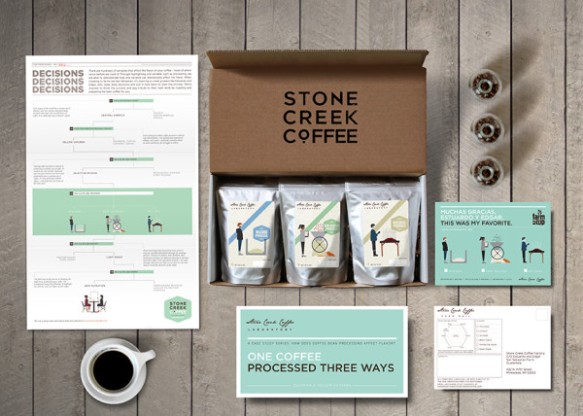 The simple approach to branding is also redefining trends in packaging. Stone Creek Coffee’s popular Lab Series includes the elevation, harvest date, and name of the farmer who grew the beans. Packaging is being driven by exemplifying the meaning and values behind the brands. With label reading, facts-up-front, brand origin stories, brands are transforming their packaging to make it quick, clear, and easy for consumers to learn all they can about their products.
The simple approach to branding is also redefining trends in packaging. Stone Creek Coffee’s popular Lab Series includes the elevation, harvest date, and name of the farmer who grew the beans. Packaging is being driven by exemplifying the meaning and values behind the brands. With label reading, facts-up-front, brand origin stories, brands are transforming their packaging to make it quick, clear, and easy for consumers to learn all they can about their products.
Brand Portfolios
 Simple, is further defining the way we look at structuring our brand portfolios. P&G is scrapping 100 brands. It’s a drastic shift in approach for the world’s biggest advertiser, which had been focused on expansion that had seen its products cannibalise one another’s sales. Now P&G can focus more on the brands that remain.
Simple, is further defining the way we look at structuring our brand portfolios. P&G is scrapping 100 brands. It’s a drastic shift in approach for the world’s biggest advertiser, which had been focused on expansion that had seen its products cannibalise one another’s sales. Now P&G can focus more on the brands that remain.
And action
And perhaps the most important aspect of driving simple, is in action. When HUL innovates a product that enables me to save buckets of water while rinsing laundry, it’s an action that I relate personally to. Addressing global water crisis is an abstract idea, saving buckets is simple. So is the impact of enabling more school days through hand wash. As brands and practitioners, we will have to look at dethroning CSR from a hallowed abstract “we-save-the-word” space, and bring it down to simpler, more tangible expressions and interactions.
So, when Lana Del Ray shares simple gif images on Tumblr, Maersk shares ship’s images on Twitter, Google goes elementary in naming, Stanford teaches business on Tumblr, P&G goes for leaner brand portfolio, HUL burns hand wash messages on rotis, the essential thread is of simplicity. Authentic, honest, relatable and approachable – with simplicity taking the lead in 2015.
Ain’t Nothing But a Family Thing
The keen observer may have noticed the change of masthead on this blog, and while I’m not typically prone to public introspection, I recognize that a name change outside of marriage (and for a man, in any circumstance) is an unusual enough event in our culture that the matter deserves a bit of explanation.
I was an intelligent but strange child — this should not be a surprise to those who know me to be a strange adult. I like to think of myself as inwardly eccentric; I present a fairly reserved public face because I’m not naturally inclined to want to draw attention to myself (though I admit my addiction to Twitter belies this claim). While I’m a happy introvert these days, my personality stems from a social anxiety I developed as a child and that persists in my adulthood. For years I was unable to recognize the source of…
View original post 1,160 more words
Mera naam
Tum nahi jaanti
Bas ek chehra hai intezaar mein
Bus stop par
I look for faces of departed friends
Wind broken at the dinner table
The stench of age
Bereft of laughter
Spread over eternity, this table
I look for faces of departed friends
In a lonely corner
Till a wail breaks
The feast of umbilical cords
I’m searched, called for
To come and bless
On my shaking, crumbling knees
Lashing against time
I walk towards the wail.
Welcome to the feast.


